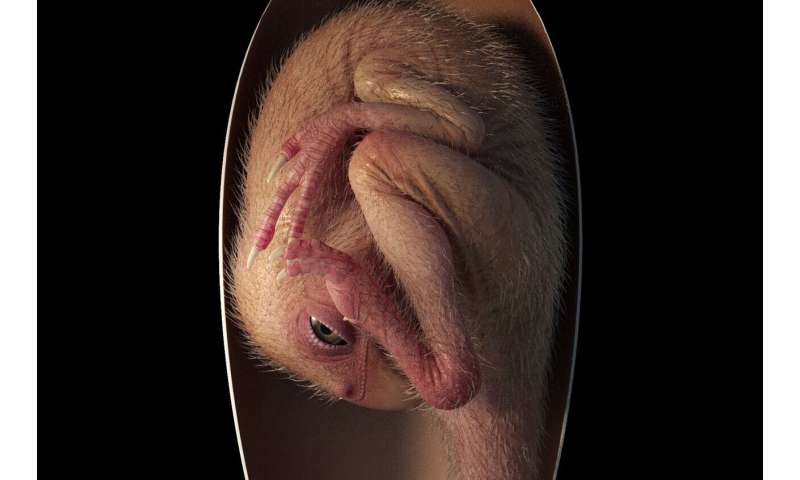Best of last week: Dinosaur embryo found inside its egg, flying humanoid robot and factors that lead to severe COVID

It was a good week for the study of ancient animals as a team of researchers from China, the U.K. and Canada described an exquisitely preserved embryo that was found inside of a fossilized dinosaur egg—the 72 to 66-million-year-old embryo belonged to a toothless theropod dinosaur known as an oviraptorosaur. Also, a team of researchers from several institutions in Germany and the U.S. found that the Earth's first-known giant was as big as a sperm whale—just the skull of the marine animal ichthyosaurs was found to be over two meters long. And a team at Tel Aviv University found that early humans hunted the largest available animals to extinction for 1.5 million years—and because of that had to learn to grow food to keep themselves fed, sparking the agricultural revolution.
In technology news, a team at the Italian Institute of Technology took steps toward developing the first flying humanoid robot. Their work involved creating a framework for allowing a flying robot to better estimate thrust which is needed to control flight. Also, a team at MIT produced the world's longest flexible fiber battery—a rechargeable 140-meter-long lithium-ion battery in the form of an ultra-long fiber that was woven into fabrics. And a team at the Institute for Transport Studies explored the factors that influence drivers while transitioning from highly automated driving. They found that drivers cannot be described as fully operational at the moment they grab the steering wheel back from the automation system, and because of that, assistance must be continued during the transition. Also, a team at Tokyo Tech proposed a carbon-air battery as a next-generation energy storage system.
In other news, a team at the University of Zurich discovered the mechanism behind DNA invasion of adenoviral COVID-19 vaccines. And a team at the University of California—Riverside found that the deadliest period in Earth's history was also its stinkiest—greenhouse gases emitted from Siberian volcanos led to microbes in the ocean emitting hydrogen sulfide during the planet's worst mass extinction.
And finally, if you are one of the millions of people around the world who have not yet been infected with COVID-19 and are wondering if you do catch it, whether yours will be a severe or fatal case, you may want to check out work done recently by a team affiliated with several institutions in the U.K.—they pinpointed blood factors that could be linked to severe COVID cases.
© 2021 Science X Network